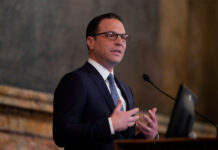
Philadelphia has emerged as a major hub for immigration on the East Coast of the United States, especially for Asians and Hispanics. Among the latter, the Dominican population has experienced sustained growth for 40 years, becoming the second largest Hispanic diaspora after the Puerto Rican one.
The 2021 National Census revealed that Dominicans make up the second largest group of foreign-born residents in Pennsylvania, with 81,192 people counted, surpassed only by those born in India (98,153). A report by the U.S. Census Bureau in July 2023 indicates that Hispanics represent 19.1% of the national population, and Pennsylvania is one of 13 states with over a million Hispanic residents (1.3 million).
The Pew Center estimates that around 2,400,000 Dominicans live in the United States, mainly in New York, New Jersey, Florida, Massachusetts, and Pennsylvania. While they generally work in commercial activities, they have also excelled in music, acting, and sports.
Dominican immigration to the United States experienced significant growth in the 1960s and 1970s. After the death of dictator Rafael Leonidas Trujillo, restrictions on leaving the Caribbean country were relaxed, which boosted migration. Many of the first Dominicans to arrive in New York came from Santo Domingo and the Cibao region, with extensive experience in agricultural production and food handling. This made it easy for them to enter the niche of «bodegas», small neighborhood stores where you can buy practically everything.
Years later, a process of displacement began towards New Jersey and then towards Philadelphia. This city offered them a less expensive environment than the Big Apple and greater opportunities to open businesses and prosper. In this way, Dominicans began buying bodegas from Koreans, who had acquired them from Puerto Ricans at a time when many went bankrupt due to the emergence of large supermarkets.
Nationally, many Dominicans and children of Dominicans have excelled, especially in the world of art and entertainment. These include: Zoe Saldaña, Michelle Rodríguez, Prince Royce, Romeo Santos, local artist Giselle Tavera, and sports celebrities such as baseball players Pedro Martínez, Sammy Sosa, Albert Pujols, and Alex Rodríguez. Today, Dominican baseball players are the most dominant among Hispanics in the MLB.
With their creativity, love of work, and desire to progress, empowered by the networks of support and Hispanic organizations created by Puerto Ricans, the new Dominican colony began to revitalize the economy of the commercial corridor in the northern zone of Philadelphia. They opened not only bodegas, but also hairdressers and beauty salons, restaurants, bars, travel agencies, remittance agencies, and other businesses that made life easier for new residents by putting various services at their fingertips.
Dominicans have also excelled in the academic, educational, medical, and mental health clinic sectors. They have reached political positions in local and state mayoralties and parliaments, and many have played a leading role in civic activism, defending the equality and civil and immigration rights of their fellow citizens.
In the Hispanic universe of Philadelphia, the Quisqueyan community is an essential part of the economic dynamism. Among the greatest representatives of the cultural wealth are Franklin Medrano and, in the political sphere, Danilo Burgos. Polón Vásquez and Dante Sánchez were part of the city’s history and left a great legacy.
With their dedication and persistence, Dominicans have contributed to the enrichment of the city’s Hispanic culture and have boosted the economy and employment. While their impact is concentrated mainly in the northern zone, it is expanding throughout the city.
They have made great contributions, like Victor Tejada and Pedro Rodriguez. And although there are still many stories to tell, in our pages we have narrated some, particularly of women who have made a difference in their fields, such as Tiffany Tavarez, Yocasta Lora, Margarita David, Gabriela Gabriel Páez, Jarihanna Eustate, Jessica Núñez, Daisy Lara and, recently, Varsovia Fernández.
On this occasion, to conclude the celebration of Women’s History Month, we present an exemplary Dominican woman, Enerolina Meléndez, a woman who is endearing to whoever has the pleasure of meeting her. Congratulations to her and to all the Dominican female diaspora that continues to weave the history of the United States.






